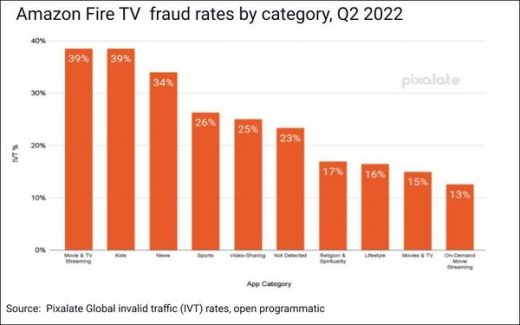CTV Ad Fraud Moderate In Q2, Chromecast Devices Riskiest
CTV Ad Fraud Moderates In Q2, Chromecast Devices Riskiest
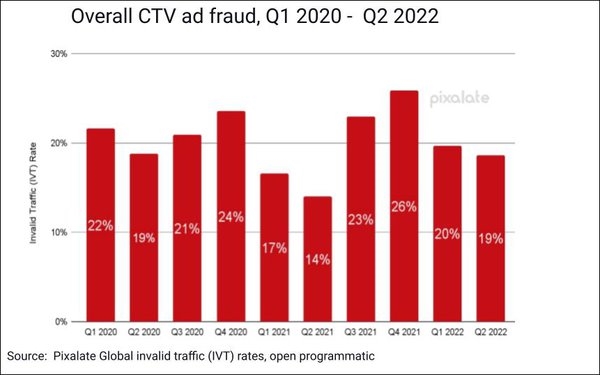
The average overall global ad-fraud rate in open programmatic buys was 19% in this year’s second quarter, according to Pixalate’s latest invalid traffic (IVT) global benchmarks analysis.
That was actually lower than all but four of the quarters since Q1 2020, although up compared to last year’s second (14%) and first (17%) quarters (above).
The data also show the U.S. continuing to be among the markets with the lowest CTV ad fraud, with a 17% rate in the quarter. Russia (8%), Germany (10%), France (16%), had the lowest rates. Canada’s (19%) was slightly higher than the U.S.
The most-impacted markets were the U.K. (24%), Chile (23%), Brazil (21%) and Mexico (20%).
Looking at CTV devices, Google Chromecast, Sony and Apple had the highest fraud rates in this year’s second quarter: 37%, 32% and 26%, respectively.
At the other end of the spectrum, the lowest fraud rates were registered on Microsoft (8%), Mxq (13%) and Roku (16%) and Amazon Fire (17%) CTV devices.
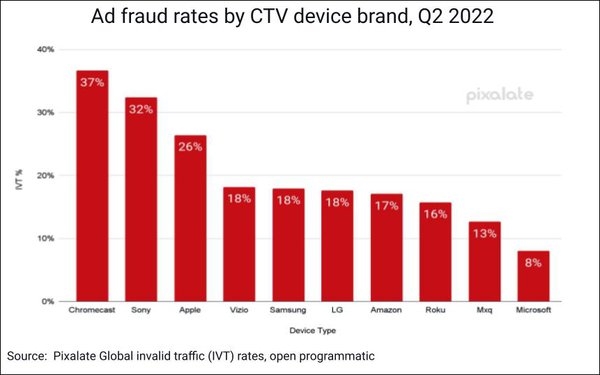
The data also found the fraud rate for Roku apps not using the Interactive Advertising Bureau’s app-ads.txt files to protect ad inventory to be twice the rate as those using the files (26%, versus 13%).
However, Amazon Fire TV apps without the files actually had a marginally lower fraud rate (24%) than those with the files (26%).
The Roku apps categories with the highest ad fraud rates were TV en Espanol (48%), food and home (38%), and apps with no designated category (36%). Educational and cable alternative apps had the lowest rates.
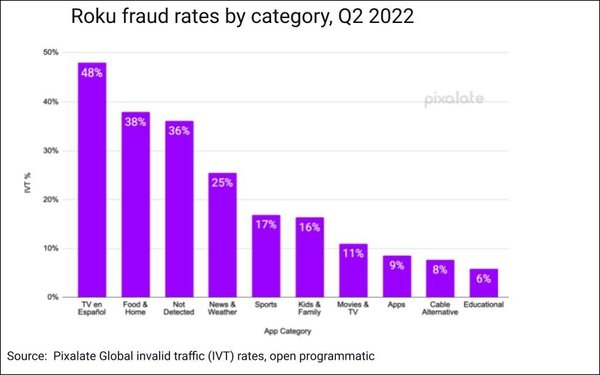
The general movie and TV streaming and kids categories had the highest fraud rates on Amazon Fire (39% each) and on-demand movie streaming had the lowest rate (13%).
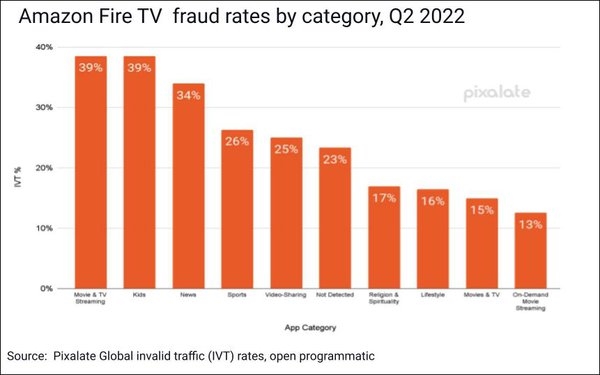
(31)

